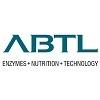The field experience of the Coccidiosis vaccine - Roundtable highlights

My day old chick at age 1 day has vaccinated with coccivac D vaccine. At 15-16 days after coccivac D vaccine we give amprolium 300 ppm to prevention of outbreak coccidiosis. At 35 days, I see on slat more feces mixed fresh blood. What is problem, what am I late give amprolium or less dose of amprolium. My brooding on the slat plastic with badding we use woodshaving. Please could you give me suggestions in these cases? Thanks a lot.
Wijaya Saputra
Hello Wijaya
I would try and first identify if you have proper cycling of oocysts. Start collecting fresh faecal samples at day 7, and every 2-3 days up until day 35. Repeat on multiple farms. This should be able to provide you with a trend of coccidiosis vaccine cycling (if management is relatively the same). You may be able to identify points where there is no or little cycling and it might give you some clues. I would watch closely what happens to oocyst counts during Amprol inclusion. This may be some of the issue.
Good luck!
.jpg&w=3840&q=75)

Candidate Genes Associated with Survival Following Highly Pathogenic Avian Influenza Infection in Chickens
Wijaya Saputra
Lots of good numbers! Cocci is definitely cycling, but is it cycling even in the birds? I would check a few things along with identifying what species of Eimeria is causing you trouble at 35 days. They cycle differently.
1) is it being applied properly - check tongue staining at Hatchery
2) first cycle in the house- are birds confined long enough to ingest all species of Eimeria?
3) use of Amprol at 14 days could be wiping out a more sensitive Eimeria that’s coming back at 35 days
That’s all I can think of for now.. good luck!
My opinion: each species of Eimeria require at least 4-5 days to complete its life cycle, so minimum 30-35 days require to develop immunity level. So after coccidiosis vaccine the indication is the few ceacal droppings with blood may come but no harm but immediately 15 days later of vaccination if any amprolium like coccidiostat apply will break life cycle & their is no use of cocci vaccine.

For obtaining optimum protection from Coccidiosis Vaccine, the companies marketing cocci vaccine must provide detailed literature in local language, so that right from application/ administration of vaccine to completion of 3 to 4 cycles (life) are completed for optimum immunity development.
Most of the mistakes/ deficiencies are made due to lack of knowledge about vaccine application, otherwise, none of the farmer wants to waste expensive cocci vaccine.
Dear Wijaya Saputra
Interesting things have already been said by other bloggers.
1- Regarding your numbers:
Except HH1, excretion peak is completed at 21d of age that is perfectly consistent with the 3rd life cycle of coccidia shredded on the floor.
2- Bloody feces and probably an upsurge of oocysts excretion at 35-37 days of age is often a consequence of a non-homogeneous cocci-vaccine application and/or birds to birds transmission.
Do you manage the 1-d old bird cocci-vaccine at the hatchery?
=> Make sure of the best liquid or gel homogeneity at the application stage.
Brooding management could help to compensate partially non-homogeneous vaccine application.
=> The birds must be confined to a max of half of the house with a set of drinker and feeder lines for at least 10 days with adequate relative humidity and temperature to make a good sporulation condition on brooding paper.
Important: By providing 60% brooding paper coverage below the feeder and water lines would provide the extra feed and water spillage needed to stimulate bird activity and appetite as early as possible. This method may provide the needed coverage to allow progeny vaccine oocysts to remain at the litter surface for ingestion by the bird (low-level oocyst cycling). The removal of the paper is a normal practice has to be completed only after 10 days after vaccination.
- Amprolium Management:
250 ppm of Amprol 50% should be sufficient. It is effective against 1st generation of trophozoites and schizonts and shows peak activity early in day 3 of cycle. As pointed out by Jarred, the administration Amprol, at 15-16 d of age is too early… Non-well infected birds will not have enough life-cycle coccidia to develop their own and efficient immunity. I would complete it between 27-29 days of age.
hope my words will be helpful.
Bertrand MEDINA - MDP / Probiotech International Inc.
Dear Salak,
This not such how many birds per m2 that is important for brooding…
I guess that 1/3 or a 1/2 free total floor (with sufficient water and feed lines) for animal proximity.
If you do not have enough nipples, you can manage water plate on the brooding paper as the feed supply.
Regards
I am a vet technician, now a master's vet student, I would like to learn more about the topic.
Dear Dr Abdullah,
Many causes … and not easy to respond without any data about the laying flock.
But except an error, unbalanced or insufficient amount minerals and trace mineral into the feed, an increase of crack eggshell is often a consequence of low intestinal absorption.
Then, we have to investigate the causes of the low efficiency of intestinal absorption: EN symptoms, coccidiosis breaks…
I recommend to use additive will have a positive effects on intestinal integrity (as example butyric acid, MOS, Local antioxydant agent…).
Regards
Bertrand MEDINA MDP / Probiotech International Inc.
Aliyu Sagir
Not an expert about this Sorry.
See with your supplier of Newcastle disease vaccine what is the best (most appropriate) practices to complete in African countries conditions (climate, breeds, barn,...).
Regards

We have a mesogenic strain of Newcastle disease vaccine called mukteswar strain or R2B vaccine. It is live vaccine with ICP VALUE 1.30 (highly invasive), excellent for birds weighing above 500gms to be given intramuscular or subcutaneous. We inject our breeders and layer birds at 7/8 WEEKS and again just before lay. Excellent results. It works even on the face of outbreak. Orthodox, but it works. It produces nervous lesions in a few birds (1%) an indication it is working. Try it, you will be amazed. New strains of Newcastle claims still need verification.


Life Rainbow
Sir, in summer we have seen thin eggshell and hairline cracked and dotted on eggshells.
I'm using organic mineral regularly and increased some dose in summer but the problem starts in summer when the temperature is rising. What is the solution?

As for the improvement about eggshell strength, please try Xtract6930 and you will be surprised at the result, it's very consistent. please contact Pancosma if you need samples and explore the reason.
Against egg shell cracked, we had a positive experience with use of vegetal extract named Epatolife containing Schizandra Chinensis, Boswellia Serrta, Arpagophytum Procumbens. Scizandra Chinensis regenerate the epatocities permitting a greater production of bile, improving the intestinal absorption of calcium for less productions of intestinal calcium soap, reducing egg breakage.

Maybe got a problem if you do poor vaccination technique and have to manage the proper moisture for coccidia growth appropriately.


United States





















.jpg&w=3840&q=75)
.jpg&w=3840&q=75)

.jpg&w=3840&q=75)